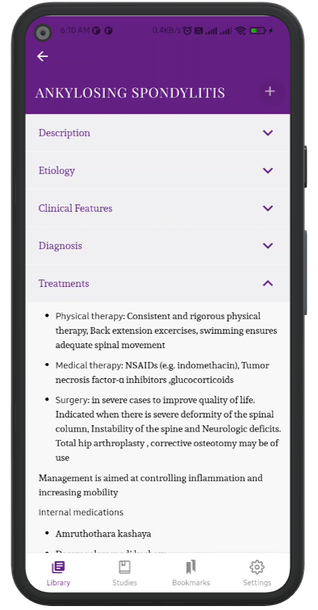GOUT
Description
- Gout is an inflammatory arthropathy characterized by painful and swollen joints. It is an inflammatory response to Monosodium urate crystals formed secondary to hyperuricemia.
- Decreased renal excretion and/or increased production of uric acid leads to hyperuricemia, which is commonly asymptomatic, but also predisposes to gout
- Acute gout attacks typically manifest with a severely painful big toe (podagra) and occur most often in men following triggers such as alcohol consumption. It is rare in children and premenopausal women. The peak age of onset in men is between 40 -60 years
Types
Gout can occur in four phases
Asymptomatic Hyperuricemia
- Hyperuricemia with no symptoms
- May be an accidental finding and may never lead to gout
- Conversely, serum uric acid levels may not be elevated during gouty arthritis
Acute gouty arthritis
- The big toe ( first metatarso phalangeal joint) is the classic site for gout
- One third of patients may get their first attack at another site such as the instep of the foot, ankle, knee, or hand joints
- Typical attack :Acute, starts in the night, typically waking the patient, joint and surrounding tissues are swollen, hot , red, shiny and extremely painful
- Mild fever with chills may accompany
- Skin over the joint may desquamate
- Atypical manifestations : Tenosynovitis, bursitis, cellulitis
- Mild pain and discomfort without swelling
- Location : usually monoarthritis during first attacks, in <20% of cases, patient presents with polyartgritis during first attacks
Intercritical Gout
Asymptomatic
After the first attack, the second episode may never occur or occurs after several years
Chronic gout ( Tophaceous Gout)
- Tophi - Appear as affirm, nodular or fusiform swelling
- Common locations of tophi are great toe, feet, hand joints and olecranon
- Tophi of helix of ear though classic are uncommon
- In inflamed Tophi – overlying skin may be erythematous
- In ulcerated Tophi – White chalky material, the urate crystals may exudates
Renal manifeastations with uric acid nephrolithiasis and uric acid nephropathy may also be seen in Gout
Investigation
- Serum Uric acid : Normally elevated
- WBC , ESR
- X ray – Punched out erosions with overhanging edges in Chronic gout
- Synovial fluid – turbid, markedly elevated neutrophils
- Demonstration of urate crystals is the gold standard for diagnosis of gout
Treatments
- Weight reduction
- Low purine diet
- Reduce intake of red meat, liver, pulses, whole grain cereals, beer, and wine
- High fluid intake
Internal medicines
- Kokilaksha kashaya
- Manjishtadi kashaya
- Punarnavadi kashaya
- Rasna erandadi kashaya
- Amrita shadanga kashaya
- Kaisosra guggulu
- Gokshuradi guggulu
- Chandraprabha gutika
- Cyavanaprasha – as Rasayana
Procedures
- Virechana – Nimbamrita eranda
- Ext application –Pinda taila, Madhuyashtyadi taila
- Dhara -Dashamoola kashaya dhara, Karaskara kashaya Dhara
Department
Kayachikitsa

